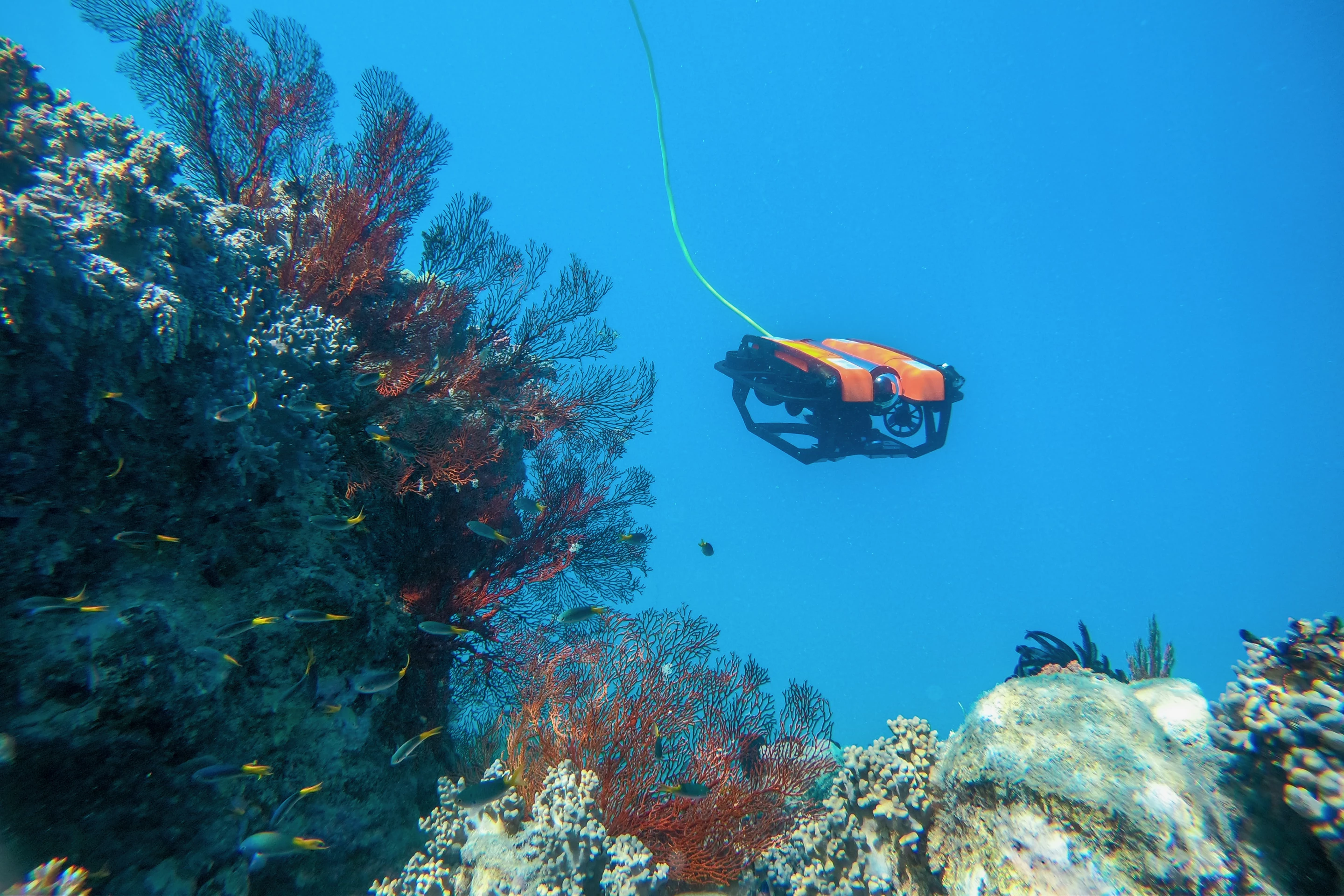Even in non-pandemic times, the Great Barrier Reef is still a difficult place for much of the world's population to get to. That's where Teleportal.Fish comes in, as it allows anyone with a computer to virtually visit the reef via a live link to a remote-control underwater robot.
Created by Australian documentary filmmaker Adam Cropp, the system currently incorporates two Osibot Heavy ROVs (remotely operated vehicles). That said, plans call for a whole fleet to ultimately be available to users.
Both ROVs are tethered to a base station that is anchored 30 km (19 miles) offshore at Arlington Reef in Far North Queensland, Australia. That station uses solar panels to charge the vehicles' batteries, plus it keeps the ROVs connected to the internet via 4G.
Utilizing an online portal, users located anywhere in the world can take control of one of the bots – day or night – viewing live video from its wide-angle 1080p camera on their computer screen. They steer it utilizing the same keyboard keys that are typically used in gaming, taking it up to 100 meters/328 ft (the maximum tether length) in any direction from its base.

Along with the HD camera, the ROVs also feature LED spotlights that put out a total of 4,000 lumens for night-time use, along with a sonar-based obstacle avoidance system to keep them from damaging the coral. They also have a top speed of 3 knots (3.5 mph or 5.6 km/h), and respond to operators' commands with a latency of less than 200 milliseconds.
Users are required to open an account and then pre-purchase credits which will be applied to their dives. According to the company, a 1-hour dive should cost AUD$30 to $50 (about US$22 to $37). The portal also features a less-expensive animated simulator, where new users can get the hang of controlling one of the ROVs before trying out the real thing in the actual ocean.
Source: Teleportal





